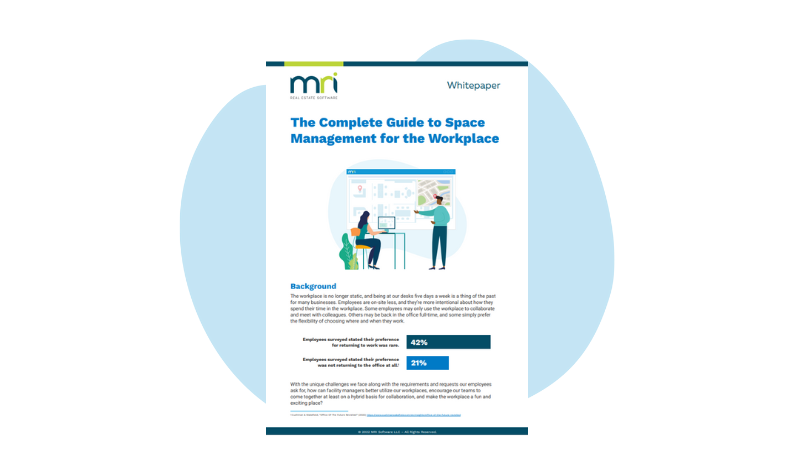The definitive guide to office space planning
Rising costs and limited resources demand a strategic approach to office space planning that fosters seamless employee collaboration while minimising unnecessary expenses. This blog post will equip you with invaluable insights into space planning software to help you discover its remarkable benefits, learn effective commercial office space planning strategies, and uncover innovative solutions tailored to your unique organisational needs. No two offices are the same, but you’ll soon find the ideal corporate office space planning solutions to propel your employee collaboration and productivity to new heights.
What is office space planning?
Office space planning is as simple as it sounds: planning your organisational space and resource allocation to best meet team’s demands or needs. The rise of the hybrid workplace has shaped corporate space and resources. Employees worldwide are more decisive about when they come into the office. Of course, there’s no perfect office design, and no two organisational spaces are the same. Each has different requirements that require an individual thought process and office space planning.
With fewer staff in the office, organisations can use office space planning software to gain valuable insights, empowering them to make data-driven decisions to structure and tailor the workspace to the needs of the employee and the business. Organisations can quickly identify what spaces and resources are used more than others, and then determine where to reduce costs and trim expenses without impacting employee performance, workplace satisfaction and productivity.
Why is office space planning important?
Office space planning is challenging, especially for larger enterprise-level organisations. It’s crucial to provide engaging office space for employees to feel comfortable, be productive and collaborate with team members is crucial. But achieving this is no easy feat. It’s no longer as simple as providing a singular, static workspace with a kitchen and meeting rooms. Successful hybrid workspaces depend on ensuring you’re aware of occupancy on a daily basis and your workspace can accommodate employees, as well as keeping your office space trim to stop any unnecessary costs.
Benefits of office space planning
There are numerous benefits of office planning. However, some of the most common benefits of space management goals in the office include;
-
Maximising your current office space
Since property leasing is one of the most significant costs for any business, it’s crucial to maximise the output of every bit of surface area. A well-thought-out office design is a guiding principle, ensuring that no corner of your office is left unused or wasted due to careless planning. By carefully considering your workspace’s layout, flow, and functionality, you can create an environment where every square foot serves a purpose without physically expanding your operations.
Imagine a scenario where your office feels cramped, cluttered, and disorganised. You can transform this space into a harmonious and productive haven through strategic office design. By implementing intelligent storage solutions, ergonomic furniture, and efficient workflow arrangements, you can declutter the office and create a sense of openness. This rearrangement boosts employee morale and productivity and lets you make the most of your existing space without incurring additional costs.
-
Future-proofing the workspace
Futureproofing the workspace is an important goal for every business. Fortunately, planning your office space carefully can help ensure your office space is prepared for any scenario, no matter what happens.
What if your business experiences a state of rapid growth? More headcount is needed. Future-proofing your workspace in this situation involves designing an open, modular layout that can easily accommodate an expanding workforce. Incorporating scalable furniture solutions, adjustable partitions and agile workstations would enable easy reconfiguration and optimisation of space as your organisation evolves.
By planning ahead and considering your growth potential, you can create a workspace that seamlessly adapts to the changing needs of your business.
How to create an office space plan effectively?
At this point, we have outlined some of the critical things you need to know about the importance of planning your office space carefully – but how can you actually do it? Creating a practical office space is surprisingly simple, but you must plan to ensure that you’re getting the most from your design. These top four tips will be the best way to get started with office space planning:
1. Analyse the current space
You must understand your workspace’s precise dimensions and dynamics for effective space planning. By evaluating whether you have too little, too much, or just the right amount of space, you can lay the foundation for informed decision making and strategic optimisation. Begin by assessing the physical layout of your office. Take measurements, observe the existing floor plan and consider the spatial relationships between different areas. This analysis allows you to clearly understand the current space utilisation and identify areas that may be unused or overcrowded.
With this knowledge, you can set simple constraints that guide your decision-making process. For instance, you may prioritise compact and multifunctional furniture solutions if you have limited space. Conversely, you can explore creative possibilities to enhance collaboration and innovation within your workspace if you have ample room.
2. Define your workspace needs
After clarifying the size of your workspace, look at what you need the space to do. Consider the specific needs and requirements of your business. Consider factors such as the number of employees, functional departments and the nature of your work processes. This analysis helps you gauge whether the current space adequately accommodates your workforce and supports efficient operations. It helps you identify potential bottlenecks or areas that compromise productivity due to spatial constraints. Dedicated space planning software lets you visualise and design your office space effectively. These tools offer space configurations to optimise your office design.
3. Plan out your office space
Finally, you can begin to plan your office space. This should always start with the primary necessities, including your desk, a chair, storage, etc. Edit seating zones and use diagrams that reflect your business teams’ occupancy and collaboration needs. Use granular reporting on seating usability to react to current seating trends and preferences, then fast-track new seating arrangements by modifying seating zones. Go one step further and provide booking tools to your employees to simplify how you book desks and conference rooms, whether through touch-free options like desk detection sensors or intuitive sign-in pads for rooms.
4. Check!
Finally, check your handiwork to ensure you’re happy with the result. You may need to rethink office space planning if you have made a mistake, but it’s worth considering. This is where specialist space management software can be helpful.
FAQs
Do you still have questions about planning your office space? The following three FAQs may help clear things up.
Space management software for the modern workplace
Use your space wisely to cut costs and improve efficiency

Final thoughts
If you want to learn more about office space planning software and employee management solutions, please don’t hesitate to reach out. Use trends, not guesswork, to use your space with MRI Software. Empower your team through space and desk booking and use space strategies to reduce office space costs. Our space management office space planning software can help you plan, measure and optimise your entire workspace to ensure consistent workplace productivity and collaboration and reduce surging costs. The right tools can provide insight into how, when, and why your employees are coming in and using available space, letting you make informed decisions regarding space usage, measurement, and optimisation.
The Complete Guide to Space Management for the Workplace
The workplace is no longer static, and being at our desks five days a week is a thing of the past for many businesses. Employees are on-site less, and they’re more intentional about how they spend their time in the workplace. Some employees may only …

